
[ Back to Who, What, Where, When, &Why | Table of Contents | On to Mekong Delta (Part 1) ]

Fast, furious, and filled with excitement.
Never a dull moment in Ho Chi Minh City (HCMC).
Just crossing the street is an adventure in itself! Actually, most
people in the South still refer
to HCMC as Saigon, which is the official name for the central part
of the city.
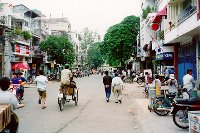
![]()
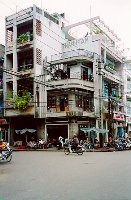
![]()

![]()
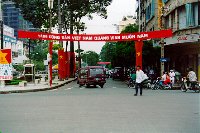
![]()
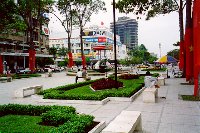
![]()
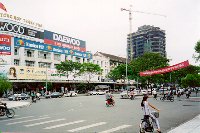
![]()
Kim's Cafe. What a great place -- friendly people,
wonderful food, and excellent tours.
What else could you ask for? We did a three-day tour with Kim's around
the
Mekong Delta, and also a one-day tour to the main Caodai temple in
Tay Ninh and
the Cu Chi Tunnels. Photos from both tours are on the following pages.
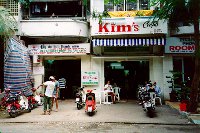
![]()
Our hotel, the Palace Saigon Hotel. (not to be
confused with the Palace Hotel, or the Saigon
Hotel) Just down the street from the fancy New World Hotel, and a block
or two from
Kim's Cafe and the famous backpacker section of town. The backpacker
section on
Pham Ngu Lao Street is actually so famous that Vietnamese tour buses
are said to
occasionally make a visit so local tourists can "see the hippies".
Turnabout of fair play,
don't you think?
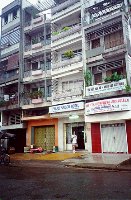
![]()
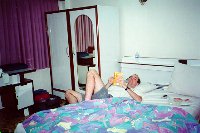
![]()
The GPO (General Post Office) -- no Poste Restante
mail for us on this trip, but
the word GPO always brings a smile to long-term travelers, so it deserves
a
photo anyway. :-)
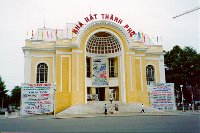
![]()
Reunification Palace, where Communist tanks rolled
through the gates on the morning
of April 30th, 1975 as part of the transfer of power at the end of
the war. The palace
is open to visitors, and is an interesting place to see. There's a
helicopter on the roof,
a tank on the front lawn, and you can tour official meeting rooms and
the heavily-fortified
basement, where much of the South Vietnamese war effort was controlled
via radios
and extensive maps.
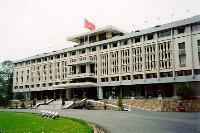
![]()
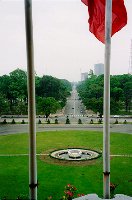
![]()
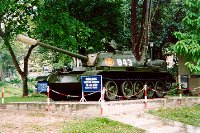
![]()
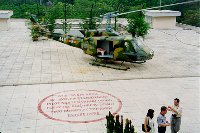
![]()
The famous Rex Hotel. Once used to house US military
officers, it now is one of
HCMC's upper-end hotels with all the luxuries.

![]()
Former US Embassy from 1967 to 1975. Many of the
final scenes of the war occured
here, as helicopters transported people from the roof of the building
out to ships
offshore. Although I only have vague memories of the event myself,
I could feel a
huge amount of tension just standing at the gates, looking in at the
decaying building.
Each corner of the square-block compound has a round guard tower with
anti-grenade screens.
Rumor has it that the building, once occupied by an oil company, is
now being reserved
to house a US consulate -- an actual embassy is now in Hanoi, following
Clinton's
lifting of the embargo in early 1994 and full diplomatic relations
being established
between the two countries in 1995.

![]()
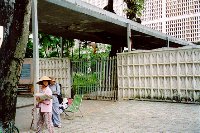
![]()
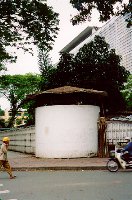
![]()
[ Back to Who, What, Where, When, &Why
| Table of Contents | On to Mekong
Delta (Part 1) ]
Comments are appreciated! Please visit the feedback page.